Revenue Per Occupied Room (RevPOR): Definition, Formula & Strategies
Nov 1, 2025
 Mika Takahashi
Mika TakahashiPopular Categories
Hotel Technology & InnovationHotel Operations OptimizationDigital MarketingIndustry TrendsRevenue ManagementHospitality Industry
Popular Categories
Trending Post

Hotel Walk Letter Template: Professional Guest Communication
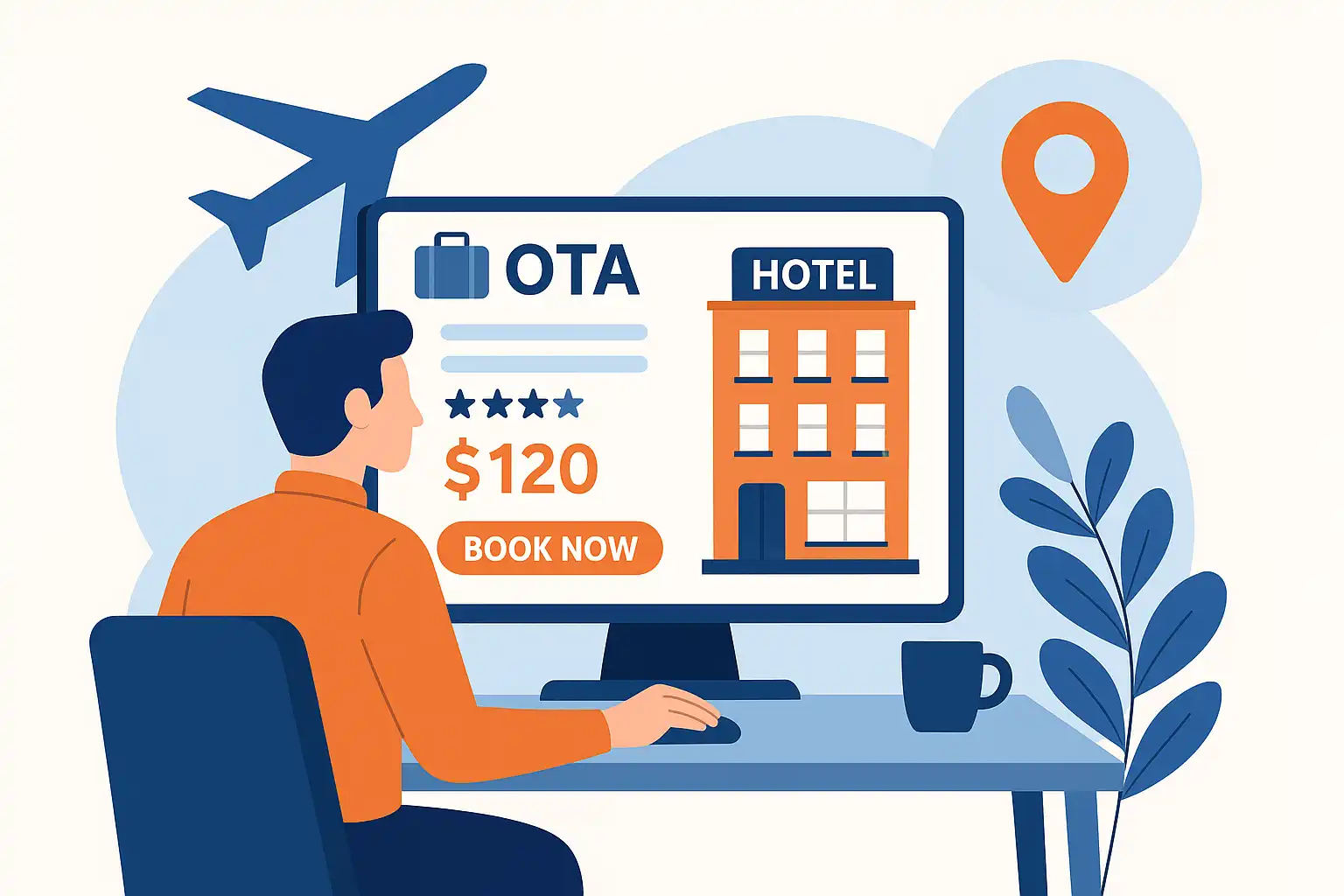
Online Travel Agents: What They Are and How They Work
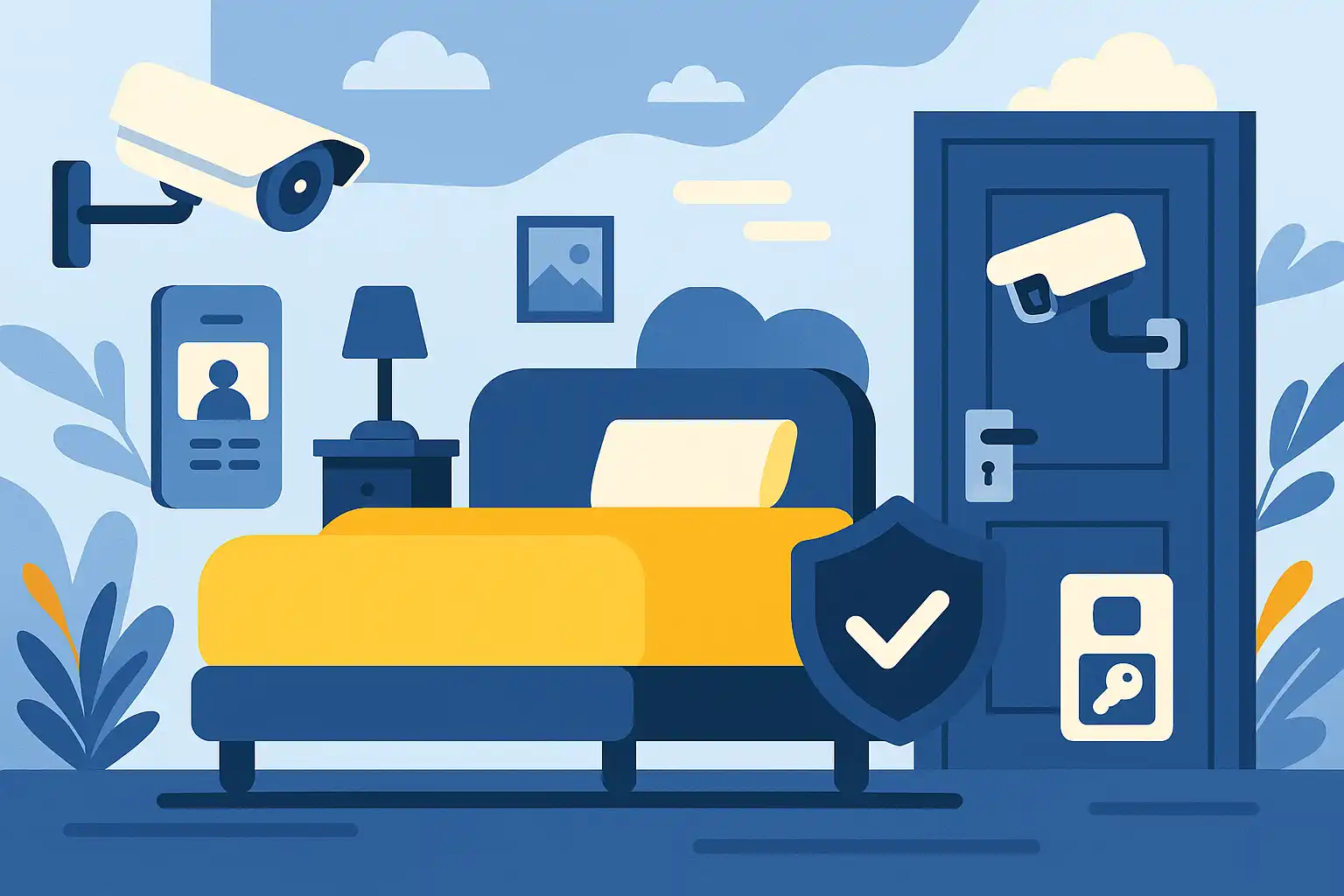
Hotel Security Systems: Modern Protection Solutions

Hotel Advertising: Complete Guide to Boost Bookings and Revenue
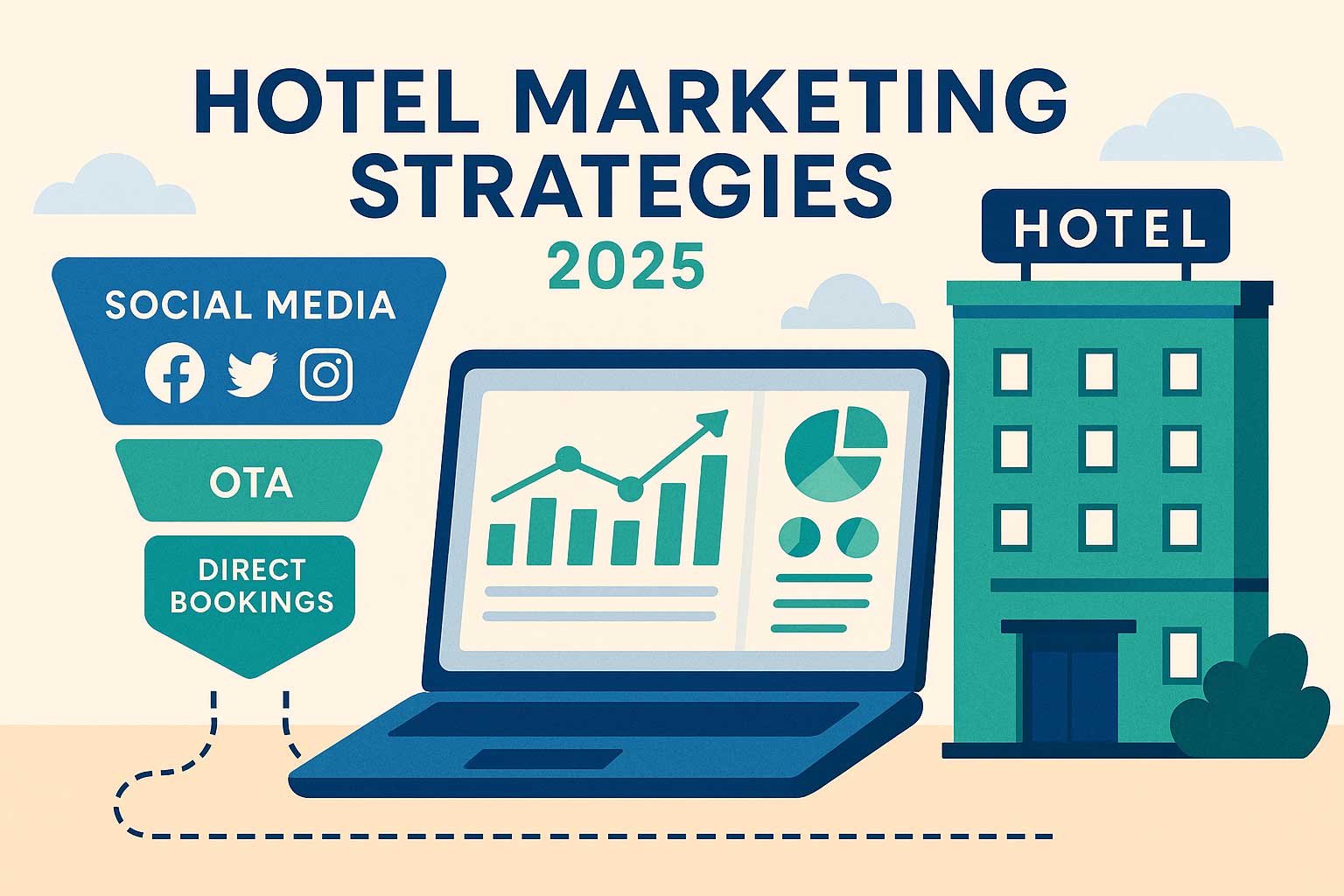
25 Hotel Marketing Strategy Ideas for 2025: Complete Guide

AI Reservation Agent: Revolutionizing Hotel Booking and Guest Experience

PMS Communication: Streamlining Property Management Through Effective Guest Messaging
Table of contents
In today’s bustling hospitality world, hotels know that simply filling rooms isn’t enough to thrive. While traditional metrics like occupancy rates and room rates give useful snapshots, they don’t tell the whole story about guest value. That’s where Revenue per Occupied Room (RevPOR) comes in — a vital performance metric that reveals how much revenue your hotel pulls in from each occupied room, including all those extras guests enjoy beyond just their stay.
RevPOR marks a fresh way of thinking about hotel revenue management. Instead of just counting how many rooms you sell or what you charge for them, this metric zeroes in on your hotel’s ability to earn additional revenue from guests who are already checked in. Whether it’s spa treatments, room service, mini bar indulgences, or room upgrades, RevPOR captures the total revenue generated per occupied room over a specific timeframe.
This guide will walk you through everything you need to know about understanding, calculating, and boosting your hotel’s RevPOR. You’ll find proven strategies to encourage guest spending, industry benchmarks to measure your success, and tips on avoiding pitfalls that can hold back your revenue growth.
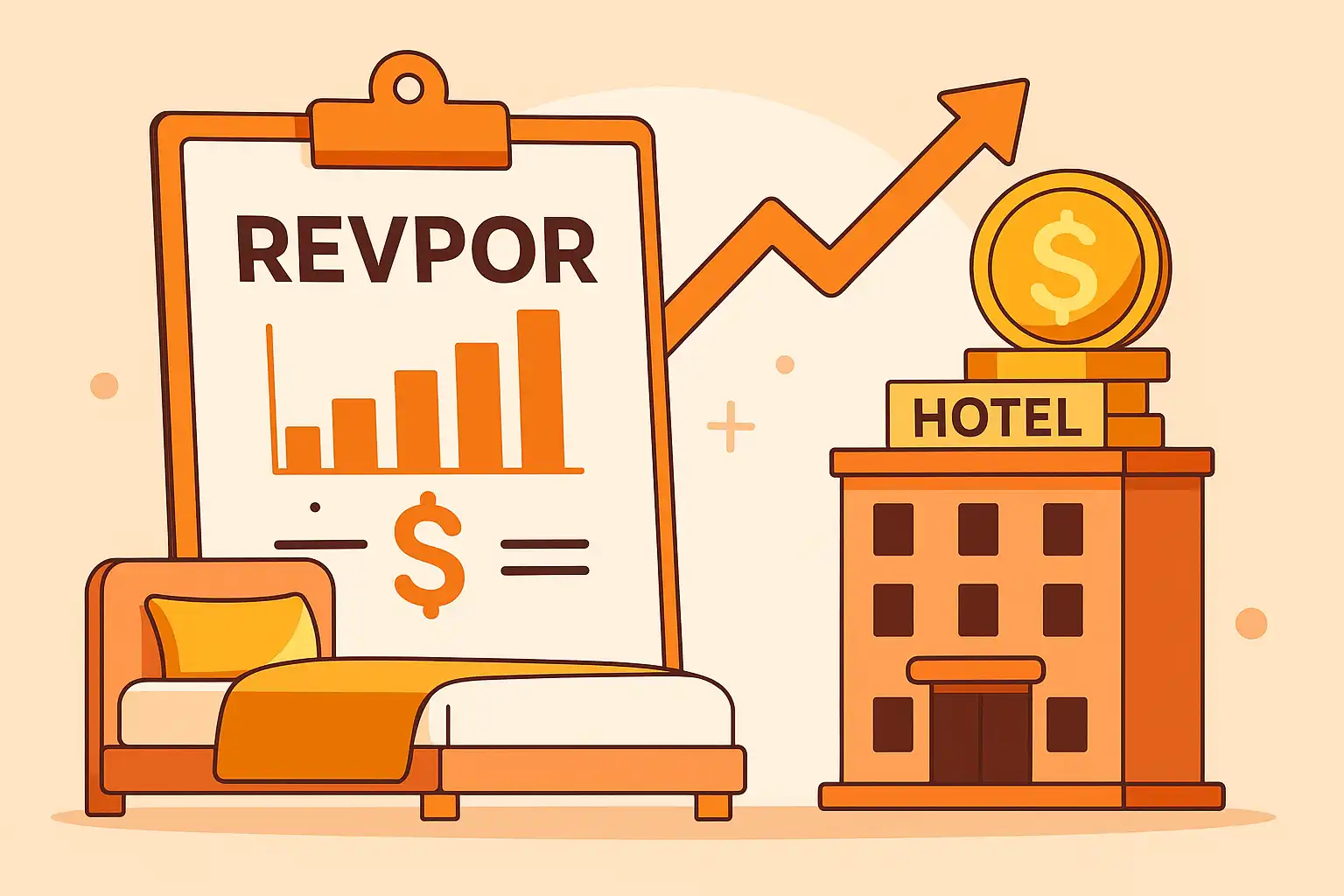
What is Revenue Per Occupied Room (RevPOR)?
Simply put, revenue per occupied room is the total revenue your hotel earns divided by the number of rooms actually occupied during a given period. Unlike metrics that focus on individual revenue streams, RevPOR gives you a full picture of guest value by including all sources of income tied to occupied rooms.
This performance metric takes into account revenue from every touchpoint during a guest’s stay. When you calculate your hotel’s RevPOR, you include room revenue plus ancillary services like spa treatments, dining, room service, mini bar sales, parking fees, and any other paid amenities guests enjoy while staying.
What makes RevPOR unique is its focus on rooms actually sold, not just the total room inventory. While unoccupied rooms generate no revenue, RevPOR zooms in on the revenue contributed by guests who chose your property. This gives you sharper insights into guest spending habits and how well your upselling and cross-selling efforts are working.
Another perk of RevPOR is that it smooths out seasonal ups and downs in occupancy. Even during slower times when fewer rooms are filled, you can keep your RevPOR steady or even improve it by encouraging guests to spend more on services and amenities.
At its core, RevPOR reminds us that each occupied room is a golden opportunity to generate more than just a room charge. Smart hotels use this metric to spot which services guests love and where they’re willing to spend extra — maximizing the profit potential of every occupied room.
How to Calculate RevPOR: Formula and Examples
Calculating RevPOR is straightforward: you divide your total revenue by the number of occupied rooms during the period you’re measuring. The formula looks like this:
RevPOR = Total Revenue ÷ Number of Occupied Rooms
To get this number, you’ll need to gather revenue from all guest-facing departments. Total revenue includes room rates plus all the extra income from food and beverage sales, spa services, room service, mini bar charges, parking, laundry, and any other paid amenities your guests use.
Here’s a quick example: say your hotel earns $45,000 in total revenue from 200 occupied rooms over one week. Your RevPOR calculation would be:
RevPOR = $45,000 ÷ 200 = $225 per occupied room
This means, on average, each occupied room brought in $225 during that week — covering both the room charge and additional guest spending.
You can calculate RevPOR over different timeframes depending on what insights you need. Daily figures help spot short-term trends or the impact of events and promotions. Weekly numbers smooth out daily ups and downs but keep you responsive to recent changes. Monthly calculations offer stable benchmarks for comparing performance, while quarterly reviews reveal longer-term patterns and seasonality.
When deciding what to include in total revenue, focus on income directly linked to occupied rooms. That means all room revenue, in-room services, hotel restaurant sales to guests, spa treatments booked by staying guests, and other ancillary services consumed during their stay. Don’t include revenue from external events, non-guest dining, or other sources unrelated to occupied rooms.
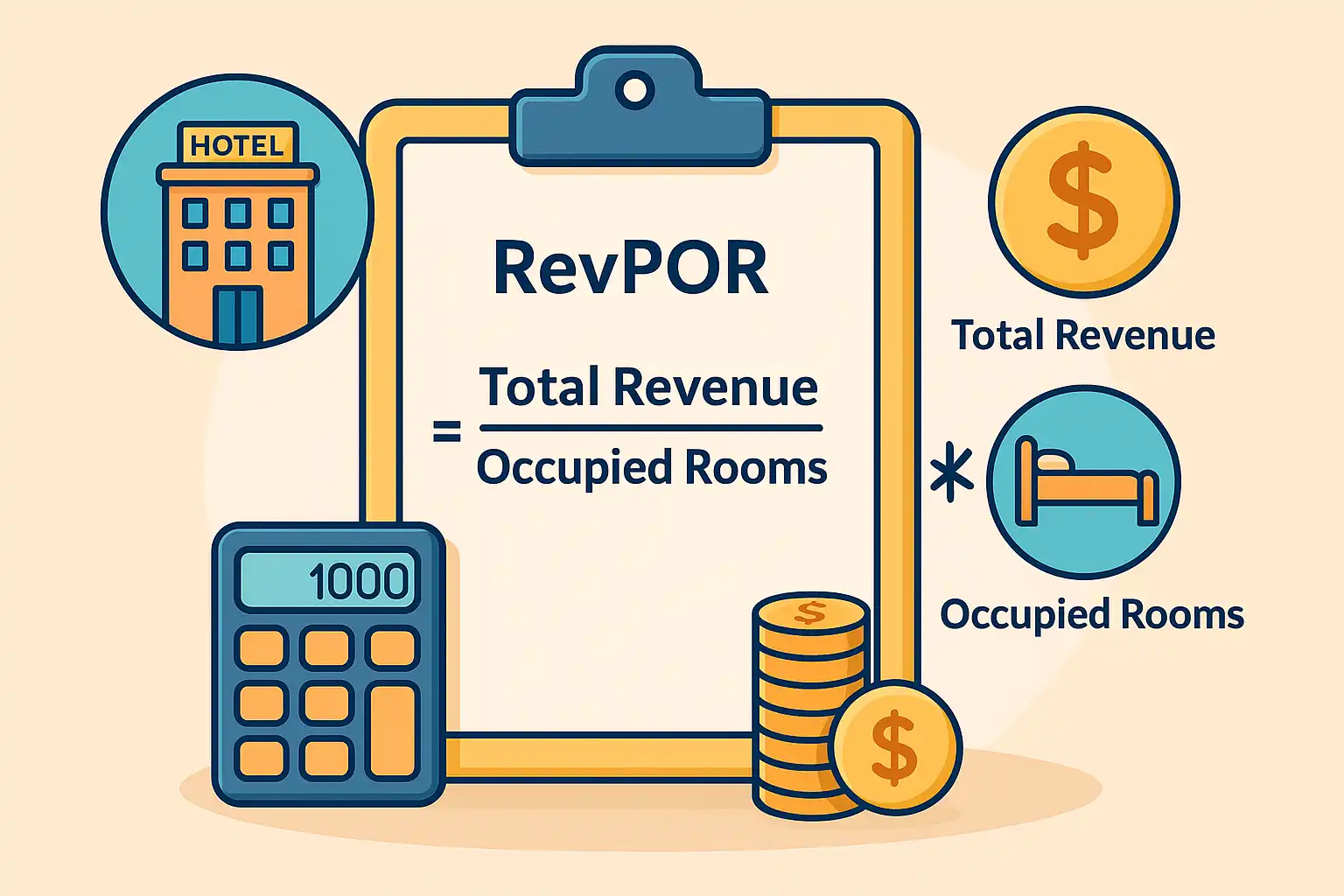
RevPOR vs RevPAR vs ADR: Key Differences Explained
To manage your hotel’s revenue well, it helps to understand how RevPOR differs from RevPAR (Revenue per Available Room) and ADR (Average Daily Rate). Each metric tells a different part of the story.
RevPAR divides total revenue by all available rooms, whether occupied or not. Because it includes unoccupied rooms, RevPAR is sensitive to changes in occupancy rates. It’s great for evaluating overall property performance and how well your pricing matches market demand.
ADR looks only at the average room rate charged for occupied rooms, ignoring any extra guest spending on spa services, dining, or amenities. It measures how effective your pricing is for accommodation alone.
The main difference between these three is their scope. RevPOR offers the broadest picture by including all revenue streams from occupied rooms. RevPAR balances revenue with how efficiently you use your room inventory. ADR isolates just accommodation pricing.
Here’s an example: Two hotels both charge $150 on average for rooms (same ADR). Hotel A earns $180 RevPOR because guests spend an extra $30 on room service, mini bar, and spa treatments. Hotel B only makes $155 RevPOR due to less ancillary revenue. Even with identical room rates, Hotel A is better at boosting revenue through upselling and guest services.
Occupancy impacts these metrics differently. When occupancy is high, RevPAR usually rises since more rooms are sold, but RevPOR might dip if guests spend less per room due to volume or discounts. When occupancy is low, RevPAR drops sharply, but RevPOR can hold steady or rise if guests spend more on premium services.
Revenue managers should track all three metrics together. RevPOR shines a light on guest engagement and revenue from services, but it works best alongside occupancy-focused measures to get the full picture of profitability and market position.
Why RevPOR Matters for Hotel Revenue Management
RevPOR has grown in importance because it reveals insights traditional metrics miss. Unlike occupancy-driven measures that jump with seasonal demand, RevPOR offers a steadier view focused on guest spending behavior rather than just booking numbers.
By filtering out seasonal occupancy swings, RevPOR helps hotels keep revenue growing even when fewer guests book. When rooms are quieter, boosting per-guest spending through enhanced services, premium amenities, and smart upselling can make all the difference.
This metric also uncovers which services and amenities bring in the most revenue. Hotels can identify their most profitable guest segments and tailor marketing to attract similar high-value customers. Knowing individual spending habits helps with targeted service development and pricing.
RevPOR also offers a clear way to measure the ROI of upselling and cross-selling efforts. When front desk staff successfully promote room upgrades or restaurant teams increase average checks, you’ll see it reflected in RevPOR numbers — making it easier to justify training and incentive programs.
It guides pricing and service decisions by showing which offerings support premium prices. If spa treatments consistently boost RevPOR, investing in spa facilities and menus makes sense. If business travelers drive higher RevPOR through in-room services and faster internet, hotels can prioritize these amenities.
Beyond immediate revenue, RevPOR points to guest value and loyalty. Guests who generate high RevPOR often become repeat customers and brand advocates. Hotels can nurture these relationships with personalized service and targeted retention.
Revenue managers rely on RevPOR to balance short-term gains with long-term guest satisfaction. While aggressive upselling might temporarily spike RevPOR, lasting success comes from delivering real value that keeps guests coming back.
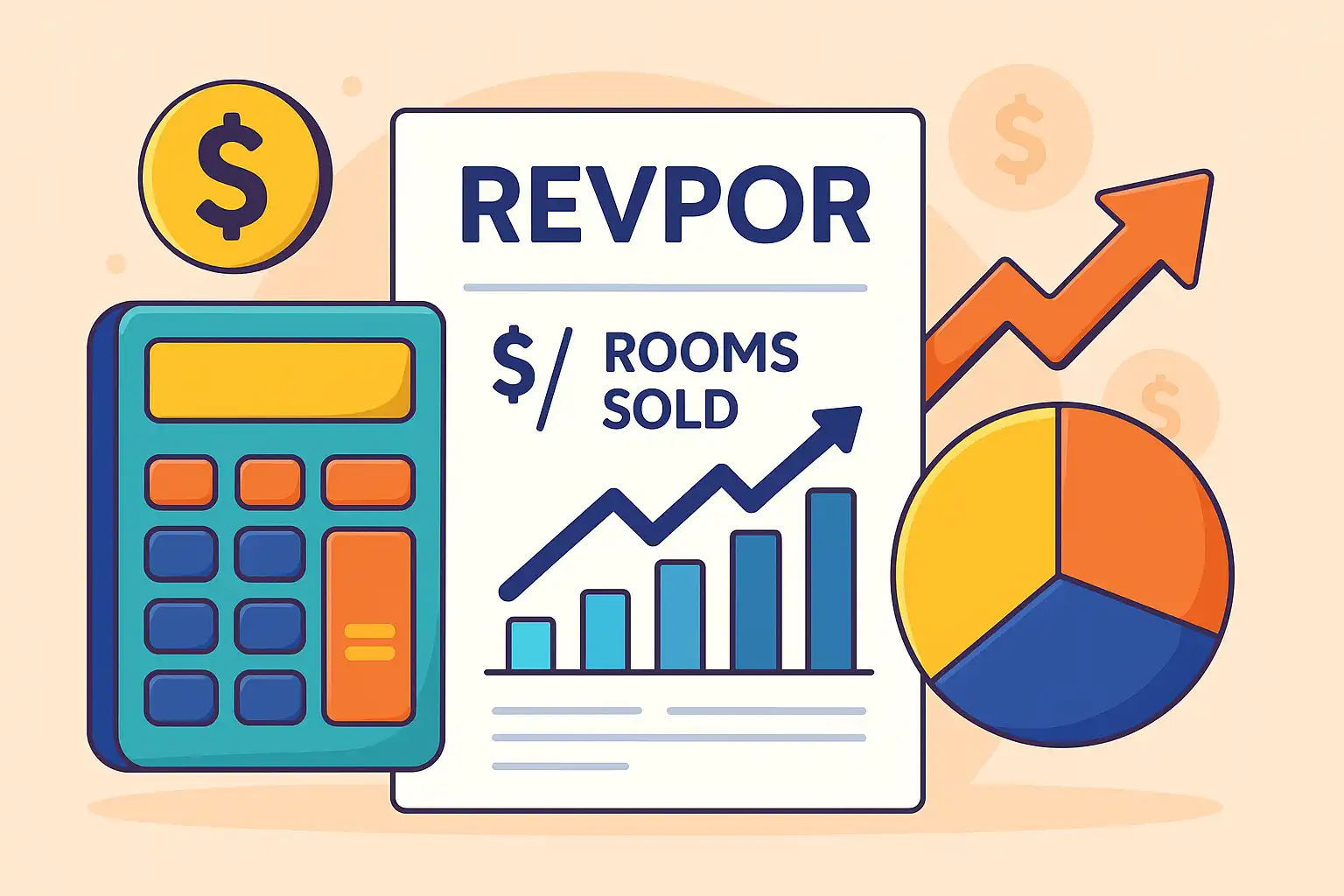
Proven Strategies to Increase Your Hotel’s RevPOR
Boosting your revenue per occupied room takes a well-rounded approach that enhances every part of the guest experience. The goal is to create real value while capturing more revenue opportunities throughout each stay.
Optimize Pricing Strategies
Start with hotel dynamic pricing that adjusts room rates and ancillary service prices based on demand, local events, and seasons. Instead of static pricing, successful hotels raise rates during peak times and offer competitive pricing during slower periods to maximize RevPOR.
During busy seasons, consider premium pricing for extras like expedited check-in, late checkout, or upgraded amenities. Just make sure these price hikes align with the value guests receive to keep satisfaction high.
Keep an eye on competitor pricing for rooms and services to find your sweet spot. Knowing market positioning helps you decide which services can command higher prices and which need competitive rates to attract guests.
Price hotel ancillary services like spa treatments, room service, and premium amenities to capture their full worth while staying attractive. Bundling complementary services at appealing prices can increase total guest spending and perceived value.
Enhance Upselling and Cross-Selling Programs
Integrate upselling into your booking engine and check-in process so guests see upgrade options naturally without feeling pressured. Online booking should highlight relevant add-ons, while front desk staff can offer personalized suggestions based on guest profiles.
Train your staff to spot and present upgrade opportunities. Business travelers might want rooms with workspaces, leisure guests could be interested in spa or dining packages.
Offer package deals that combine rooms with dining, spa treatments, or local experiences. These simplify booking and ensure higher revenue per occupied room. Popular bundles include romance packages, business bundles, and family offers with meal credits.
Use post-booking emails, app notifications, and in-room materials to promote upgrades and extras without disrupting the guest experience. Well-timed communication encourages additional spending.
Improve Guest Experience and Personalization
Use guest data to tailor services and recommendations, boosting the chance guests will spend more. Property management and CRM systems help you understand preferences and past behavior for targeted offers.
Upgrade in-room amenities to add value and revenue. Premium toiletries, specialty drinks, high-end linens, and tech upgrades justify higher rates and earn positive reviews. Think curated mini bars, premium coffee, or exclusive dining options.
Collect guest feedback regularly to spot revenue opportunities that match real needs. Surveys and reviews reveal what guests love and where you can improve.
Create memorable, personalized experiences that justify extra spending. Welcome gifts, surprise upgrades for special occasions, and exclusive access to hotel facilities build emotional connections that drive loyalty and revenue.
Optimize Distribution Channels
Focus on channels that bring in guests with strong spending habits to boost direct bookings and RevPOR. Analyze which platforms attract high-value guests and allocate marketing resources accordingly. Corporate partners often bring business travelers with higher ancillary spending.
Promote direct bookings to save on commissions and foster better upselling opportunities. Use user-friendly booking engines that highlight upgrades and perks. Offer exclusive deals to encourage guests to book directly instead of through third parties.
Partner with OTAs to offer package deals bundling rooms with dining, activities, or transport. While commissions cut into profits, well-crafted packages can raise gross RevPOR enough to offset costs and attract new guests.
Monitor channel performance closely. Track not just bookings and rates but also guest spending patterns by source. Use this data to negotiate commissions and allocate marketing budgets wisely.
RevPOR Benchmarking and Industry Standards
Knowing industry benchmarks for revenue per occupied room helps hotels see how they stack up against competitors and spot areas to improve. RevPOR varies widely by property type, location, market segment, and services, so compare yourself to similar hotels rather than broad averages.
Urban hotels in big markets usually report RevPOR between $120 and $180, thanks to moderate ancillary spending on business services, dining, and amenities. These hotels often serve business travelers who consistently spend on room service, laundry, and business centers. Those with strong food and beverage or premium amenities may see higher RevPOR.
Luxury resorts often exceed $300 RevPOR because they offer extensive spa services, fine dining, activities, and high-end extras. Their guests spend heavily on luxury services, pushing RevPOR well above room rates.
Midscale hotels tend to have RevPOR close to their average room rate, reflecting less ancillary revenue. They may lack spa or premium dining options but can grow RevPOR by adding services and boosting upselling without big investments.
Seasonal trends affect RevPOR too. Resorts see peak RevPOR in busy seasons when demand allows premium pricing. Business hotels may have steadier RevPOR with slight boosts during conference periods.
Competitive set analysis beats broad averages. Pick 3-5 similar hotels locally and track their RevPOR trends to see if gaps come from market conditions or operational issues needing attention.
Set realistic RevPOR growth goals by understanding current performance and market potential. Aiming for 5-10% annual increases is ambitious but doable for most hotels by enhancing service and upselling. Hotels with untapped ancillary revenue can achieve even bigger gains with smart investments.
Your market positioning shapes RevPOR targets. Premium hotels should consistently outperform value-focused ones thanks to guest expectations and willingness to pay for extras. Value hotels can still achieve strong RevPOR through efficient service and smart pricing.
Industry reports from groups like STR provide valuable regional and segment-specific data to help benchmark RevPOR. Regularly reviewing these trends uncovers new opportunities and challenges.
Common RevPOR Mistakes and How to Avoid Them
Avoid these common pitfalls to keep your RevPOR efforts on track and meaningful.
The biggest mistake is calculation errors. Some hotels mistakenly include revenue from unoccupied rooms, external events, or non-guest services. Make sure your revenue tracking attributes only income from occupied rooms. Exclude conference revenues, local diners, and other unrelated streams.
Focusing only on RevPOR without watching occupancy can mislead. A hotel might have great RevPOR from high rates and upselling but lose market share due to low occupancy. Balance RevPOR with occupancy and other key indicators for a full picture.
Heavy discounting to boost occupancy can hurt long-term RevPOR by attracting price-sensitive guests who spend little extra. Instead, focus on value-based pricing that draws guests willing to pay for enhanced experiences.
Ignoring guest satisfaction while chasing RevPOR can backfire. Aggressive upselling, overpriced services, or poor delivery might raise short-term numbers but damage reputation and repeat business. Make sure your strategies genuinely improve the guest experience.
Undertrained staff miss revenue chances or annoy guests. Front desk teams need confidence and product knowledge to offer upgrades effectively. Invest in training to boost sales skills and service quality.
Failing to track where ancillary revenue comes from makes it hard to optimize offerings. Keep detailed data on which services perform best and which guest segments spend most. Use this to refine services and marketing.
Ignoring seasonal shifts and guest behavior changes leads to poor RevPOR strategies. Understand business travel patterns, leisure trends, and event calendars. Adapt your approach to each season while maintaining service standards.
Overlooking operational costs can shrink profits despite higher revenue. When adding services or amenities, analyze incremental costs and margins carefully. Make sure RevPOR gains translate into real profit.
Best practices include regular performance reviews, integrating guest feedback, competitive analysis, and staff training. Monthly RevPOR check-ins alongside other metrics help spot trends and opportunities. Use guest input to confirm strategies enhance experience and revenue.
Use integrated revenue tracking systems for accurate RevPOR calculations and actionable insights. Modern property management systems can capture all revenue streams and link them to occupied rooms, enabling sophisticated analysis and optimization.
Conclusion
Revenue per occupied room is changing the way hotels think about revenue management. Moving beyond just occupancy and rates, it captures the full value of every guest relationship. By measuring total revenue from occupied rooms — including all those additional services and spending — RevPOR gives hospitality pros deeper insight into guest behavior and hotel performance.
The strategies in this guide show you practical ways to boost RevPOR, from dynamic pricing and upselling to personalized guest experiences and smart distribution. Success means balancing revenue growth with genuine value that keeps guests happy and coming back.
Mastering RevPOR means accurate measurement, benchmarking against peers, and applying proven tactics. Hotels that do this well set themselves up for steady revenue growth no matter how the market or seasons shift.
Start improving your hotel’s RevPOR today by tracking all revenue, benchmarking your performance, and training your team on value-based upselling. Remember, lasting RevPOR growth comes from delivering exceptional guest experiences that encourage spending throughout every stay.
